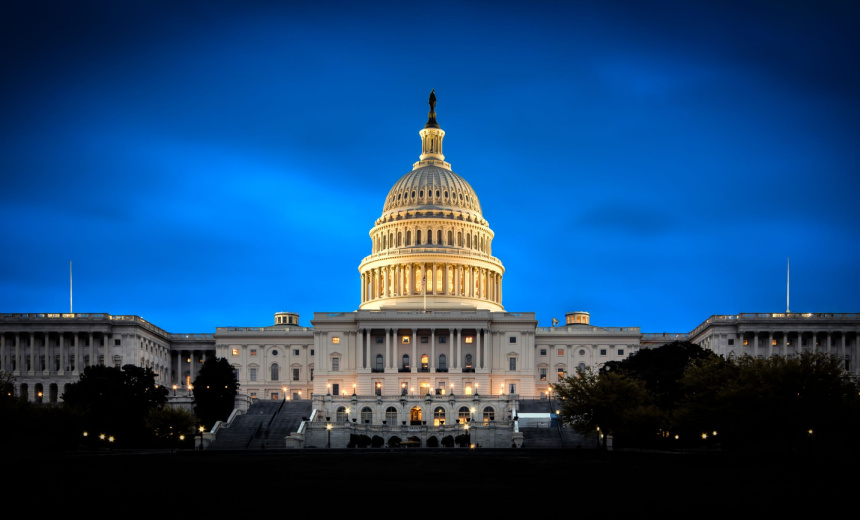Government
,
Industry Specific
Cybersecurity Programs, Workforce Face Disruption If Congress Fails to Act

The U.S. Congress has just four days to avoid a government shutdown and the expiration of a public-private threat sharing law – a countdown clock to midnight Tuesday provoking unease among cyber defenders. Raising the stakes is a Trump administration notice that it could instigate mass layoffs of federal workers should the Senate not extend appropriations past Sept. 30, the final day of the federal fiscal year.
See Also: New Trend in Federal Cybersecurity: Streamlining Efficiency with a Holistic IT Approach eBook
Congress often pushes the government to the brink of closure, narrowly avoiding shutdowns in fall 2023 and early 2025 through stopgap measures, with the only full lapse in the past decade being the 35-day partial closure from December 2018 to January 2019. Federal agencies have historically kept national security staff, including cyber personnel, on the job even through funding shortfalls so that essential missions can continue.
Previous Department of Homeland Security contingency plans indicated the Cybersecurity and Infrastructure Security Agency would keep only about a third of its staff during a shutdown, but the White House removed public contingency documents from its site earlier this year, leaving it unclear how cuts would fall across DHS components. CISA has already lost roughly a third of its workforce, and former officials warn that further reductions could undermine its ability to monitor threats, respond to incidents and carry out security assessments.
Funding negotiations on Capitol Hill have deadlocked after President Donald Trump on Monday scrapped a planned meeting with Democratic leaders. The White House on Wednesday ordered agencies to prepare mass layoff plans, instructing them to consider reductions for staff in programs “not consistent” with the priorities of President Donald Trump.
Congress also faces a September deadline to keep key cyber programs alive, with the Cybersecurity Information Sharing Act of 2015 and the State and Local Cybersecurity Grant program both at risk if funding lapses. Analysts say that losing support for real-time threat sharing and state and local defenses would weaken some of the nation’s most important frontline protections (see: Cyberthreat Law at Risk in Washington Spending Showdown ).
House Republicans approved on Sept. 19 a stopgap funding measure that would keep agencies funded through Nov. 21 and also extend the information sharing statute through that date. Senate Democrats have balked at the extension, arguing that an extension should reverse cuts to federal healthcare spending and restrict Trump’s ability to impound appropriations. Senate Minority Leader Chuck Schumer, called the White House’s mass layoff memo “an attempt at intimidation.”
Federal agencies are bracing for difficult choices on staffing, and the lack of clear contingency plans makes it harder to gauge how deeply shutdown cuts could ripple across mission-critical operations.
“CISA and most federal cyber teams are already stretched thin on staff and resources,” said a former CISA official who spoke on condition of anonymity. “Add in a shutdown on top of more layoffs and the country will be left dangerously exposed.”
With staffing already strained and public contingency plans unclear, experts told Information Security Media Group core defenses like continuous monitoring of federal networks, as well as the ability to provide incident surge capacity, vulnerability remediation and public-private threat sharing could all be hampered by a shutdown. Threat actors could also see the moment as an opening to escalate ransomware or nation-state campaigns, analysts said.
The 2018 and 2019 closure did not coincide with a notable surge in ransomware attacks targeting federal agencies but today’s threat landscape is more aggressive and the lack of public contingency plans heightens the risk for inadequate responses to major threats, said Chrissa Constantine, senior cybersecurity solution architect for the security firm Black Duck.
“The lack of transparency from OMB further compounds the issue, leaving a critical gap in the information needed to plan and respond effectively,” said Constantine. “To safeguard national security and maintain cyber resilience, it is imperative that contingency plans be made public, critical cyber programs be protected from funding cuts and workforce stability be prioritized.”
A shutdown would most immediately disrupt cyber functions considered nonessential, potentially leaving gaps in partner coordination. Contractors could also face stalled approvals or blocked facility access, slowing delivery of security tools and services even when funding is intact.
A potential pause in CISA’s cyber and physical security assessments could leave sectors like schools, water systems and hospitals more exposed, said multiple current and former CISA staffers. Although the agency would likely argue it has enough staff to keep those operations running, they said furloughs and morale issues could still delay incident response as ongoing instability pushes cyber talent out of government service (see: How Trump’s Cyber Cuts Dismantle Federal Information Sharing).
A shutdown could also touch the military’s cyber mission, where U.S. Cyber Command plays a central role in defending Department of Defense networks and supporting national security operations. Former officials told ISMG that while many of its functions are considered essential, any staffing disruptions or delayed support could still slow coordination with intelligence partners and strain ongoing priorities.
“Threat actors are watching and acutely aware of the weakened security posture resulting from understaffed positions and instability,” said Tony Monell, vice president of the public sector at Black Kite and former senior advisor on cyber policy for the office of the secretary of defense. He added that shutdowns disrupt two-way information sharing with private sector and international partners while “network maintenance and security posture are sacrificed at the expense of monitoring the vast cyber terrain for immediate threats.”
CISA and the Defense Department did not immediately respond to questions from ISMG about how a shutdown could affect cyber staffing, contingency plans and the continuity of critical operations. Officials also declined to say whether reductions in force might disrupt public-private threat sharing or delay support for state and local governments.
